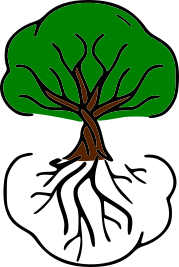Unlike other mountains I have covered in this series, the complicated history of this mountain shows through before even getting into the post. My intention, as always, is to inspire people to get outside with providing some tidbits to get them excited. With this one, however, I also hope to spark conversation with how our language can be hurtful and oppressive, even with the best intention. Before getting into the history of people, lets dig into what has existed for millions of years; the rocks!
Geology
Located on the line between Northern and Central Appalachia, the mountain range doesn't look too impressive at first. Even though it is the highest point in Pennsylvania, the area looks relatively flat. This is due to being on top of the Allegheny Plateau, which is typical for the western part of the Appalachian mountains.
Sandstone, limestone, and shale are all typical rocks found in the area, as there used to be a large inland sea here. In the higher areas of Appalachia rocks will typical be large boulders due to having the soil eroded away along with being hard to exivate for human use.
Facebook reminding us how long and complicated histories are still with us today.
History
“The most commonly accepted historical account as to how Negro Mountain received its name can be traced to the 1750s. Colonel Thomas Cresap and his black body-servant, “Nemesis,” were tracking a group of American Indians who some say had attacked a settlement near present-day Oldtown in Allegany County. It was said a family had been murdered and horses stolen. Others write Nemesis was requested to accompany a ranging party that regularly scouted the frontier in order to protect homes from attack. Either way, Nemesis had a premonition he would not return.
One evening while cleaning his weapon, Nemesis told Cresap that he would not be coming back. Cresap thought Nemesis was afraid, or going to runaway. He “jestingly” offered Nemesis the opportunity to remain behind with the women if he was afraid. Nemesis replied he was not scared, but simply stating a fact. Cresap’s party pursued the Indians over present-day Savage and Meadow Mountains, to the next mountain where a fierce battle ensured. Nemesis fought bravely, was killed, and buried on the site.
Cresap named the mountain in honor of Nemesis’ race and it has ever since been known as “Negro Mountain.” Nemesis was said to have been a large and powerfully built man. “Negro Mountain” remains a memorial and historic tribute to the presence of this black frontiersman.”
At least the mountain was named in honor (kindof) of the skills and actions of Nemesis (unlike Coon Lake out in Washington). Edit: It is now named Howard Lake to honor the man who lived there, Wilson Howard. But when you look up this hike, you might also find it called Mt. Davis. Why?
Mt. Davis is named after John Nelson Davis, who was a naturalist and veteran in Pennsylvania. The summit is Mt. Davis. The mountain is Negro. While there have been steps to try to change the name in PA, all action to this date has been unsuccessful.
If you find this to be a problem, vote! Tell your represenatives! Take action! I know I will.
Directions and Trails
Unlike most mountains, you can actually drive directly to the summit of this one or take a wonderful five mile hike.
-Summit drive: Just type "Mt Davis Observation Tower" into your favorite GPS app, and it will take you right to the top. There is weaker cell phone coverage getting there, but it should hold out. Also, all of the roads should be fine for a standard car; no off roading needed.
-Five mile hike: Drive to 4502 Mt Davis Rd, Meyersdale, PA 15552, where there is a little picnic area. Parking is free, just don't stay past sunset. Going up the hill you will find a board with more information. In a typical lollipop shape, you will hike south (up the hill) for a little bit, then the loop starts. I recommend keeping right so you can see the observation tower first. It is also a great place for lunch!
Once there you can climb the tower, just make sure to secure all belongings: it does get very windy.
Your hike will then mostly go downhill through well marked trails. You can either cut your hike in half by taking the Shelter Rock Road back to your car or continue. If you do, there is a roaring river for you to cross! Don't worry, it is only two feet wide in spring so I didn't even get my shoes wet.
Habitat
There are countless little things to find on this trail. From hidden springs to countless birds singing; as long as you can see the trail blazer feel free to see what you can find!
But like most of Appalachia, this is a typical dense forest. In early spring when I went there was more sunlight shining through, but once summer hits most of the trail is shaded.
If you are quite enough you are able to see deer and other animals up close, but you should not need to worry about bears (as long as you don't stay past sunset).
View
No matter what we humans do it is always refreshing to be humbled in the sight of these mountains and forests.
I personally wonder how many stories the tall pine tree has seen over its lifetime. How many squirrels have climbed to the top, to look out just as I did on the observation tower?








